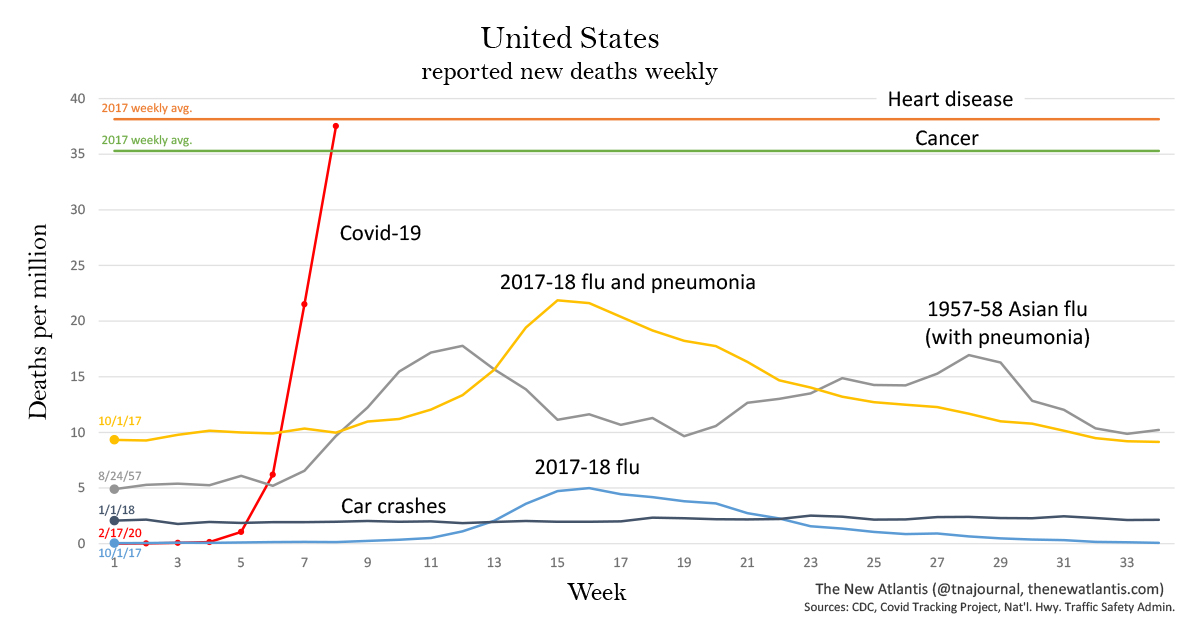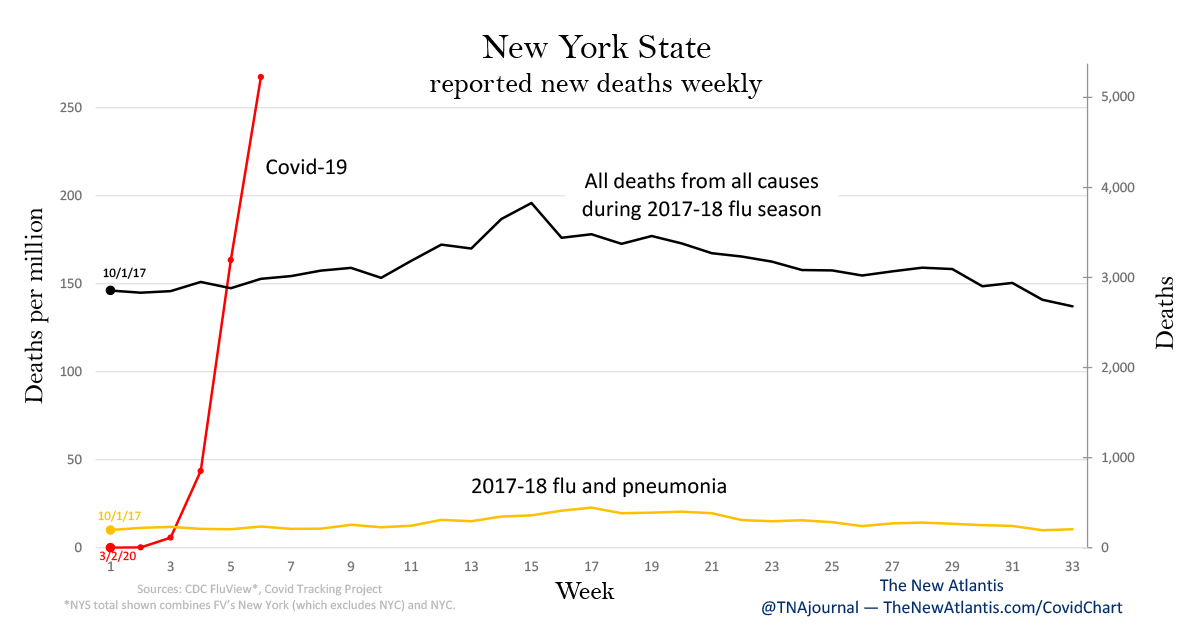LibertyTurns
Banned
- Messages
- 6,216
@GTRanj2 My point requires no sympathy because philosophically its based on freedom of choice.
Now in reality I’m providing an abundance of flexibility. My company, I played a large role, defined numerous paths to accommodate every possible short term scenario, but it’s unreasonable for me to do it ad infinitum. That being said, 1.8% of the workforce is at home drawing unemployment. There’s really not much more I can do & at some point some will exhaust unemployment benefits regardless of what I can do. Some keep bring up “oh there’s this scenario that’s unfair to this person” therefore we need to make sure everyone has the same dis-benefit.
At what point does it become the individual’s responsibility? I can’t de-risk every obstacle every person will ever face. Similarly government should not provide a safety net for every individual that won’t step back from the ledge. It’s just not possible to guarantee every person a good outcome in life in anything anyone does at any time. Not even in the US.
Some data points, within 50 mi of where I live:
* C19 infection rate is .05%. Note: we have not tested 100%.
* 2.35% of the population has been tested for C19. Note: It is possible there are reporting errors so it’s potentially higher (likely according to health reps).
* mortality rate is .0006% from C19. I did not put too many zeroes in and I know the difference between .06% and .0006%.
* mortality rate of people testing positive for C19 is 1.2%. See above, could be less very easily if we tested more.
At my workplace we have taken the temperature of over 12k people the last 2+ weeks. We have had zero people reporting to work with over the 99.5F temp threshold. We seemingly have effectively self-quarantined. Telehealth reps release people calling out back to work once they’ve been reviewed. It’s an easy process and deployable on a large scale, even can be automated.
Hey maybe we’re all wrong, but what I think we’ve done is instituted rational controls to enable us to operate safely. It can be done on a regional level, no doubt. For the naysayers, I can no more protect you from C19 than I can protect you from a drunk driver, a person texting while driving, your friend/ family member/ random stranger assaulting you, from you having a heart attack from years of smoking or overeating, etc or whatever reckless behavior you engage in.
Not every crisis in the world is unmanageable & neither is this one. Just because NYC & some other areas mismanaged their response does not mean where I live did and there’s no reason for me to be subjected to extraordinary measures they now require because some irresponsible bastards in areas subjected to extremely poor leadership acted against their own self-interests. In many ways I’m going to pay for their irresponsibility & it will probably last my entire lifetime.
Arm people with facts, not political talking points. After that they need to be permitted to make their own decisions as long as there’s not an immediate/high potential threat then measures are appropriate for the greater good. After all, this is a free country or at least it’s supposed to be. I have a better than odds chance of being hit by lightning (and that’s no joke) where I live than dying of coronavirus. The people where I live are not dumb & are either going to be permitted to return to a more normal lifestyle soon or will eventually rid themselves of those making bad decisions 6 months from now.
Now in reality I’m providing an abundance of flexibility. My company, I played a large role, defined numerous paths to accommodate every possible short term scenario, but it’s unreasonable for me to do it ad infinitum. That being said, 1.8% of the workforce is at home drawing unemployment. There’s really not much more I can do & at some point some will exhaust unemployment benefits regardless of what I can do. Some keep bring up “oh there’s this scenario that’s unfair to this person” therefore we need to make sure everyone has the same dis-benefit.
At what point does it become the individual’s responsibility? I can’t de-risk every obstacle every person will ever face. Similarly government should not provide a safety net for every individual that won’t step back from the ledge. It’s just not possible to guarantee every person a good outcome in life in anything anyone does at any time. Not even in the US.
Some data points, within 50 mi of where I live:
* C19 infection rate is .05%. Note: we have not tested 100%.
* 2.35% of the population has been tested for C19. Note: It is possible there are reporting errors so it’s potentially higher (likely according to health reps).
* mortality rate is .0006% from C19. I did not put too many zeroes in and I know the difference between .06% and .0006%.
* mortality rate of people testing positive for C19 is 1.2%. See above, could be less very easily if we tested more.
At my workplace we have taken the temperature of over 12k people the last 2+ weeks. We have had zero people reporting to work with over the 99.5F temp threshold. We seemingly have effectively self-quarantined. Telehealth reps release people calling out back to work once they’ve been reviewed. It’s an easy process and deployable on a large scale, even can be automated.
Hey maybe we’re all wrong, but what I think we’ve done is instituted rational controls to enable us to operate safely. It can be done on a regional level, no doubt. For the naysayers, I can no more protect you from C19 than I can protect you from a drunk driver, a person texting while driving, your friend/ family member/ random stranger assaulting you, from you having a heart attack from years of smoking or overeating, etc or whatever reckless behavior you engage in.
Not every crisis in the world is unmanageable & neither is this one. Just because NYC & some other areas mismanaged their response does not mean where I live did and there’s no reason for me to be subjected to extraordinary measures they now require because some irresponsible bastards in areas subjected to extremely poor leadership acted against their own self-interests. In many ways I’m going to pay for their irresponsibility & it will probably last my entire lifetime.
Arm people with facts, not political talking points. After that they need to be permitted to make their own decisions as long as there’s not an immediate/high potential threat then measures are appropriate for the greater good. After all, this is a free country or at least it’s supposed to be. I have a better than odds chance of being hit by lightning (and that’s no joke) where I live than dying of coronavirus. The people where I live are not dumb & are either going to be permitted to return to a more normal lifestyle soon or will eventually rid themselves of those making bad decisions 6 months from now.


